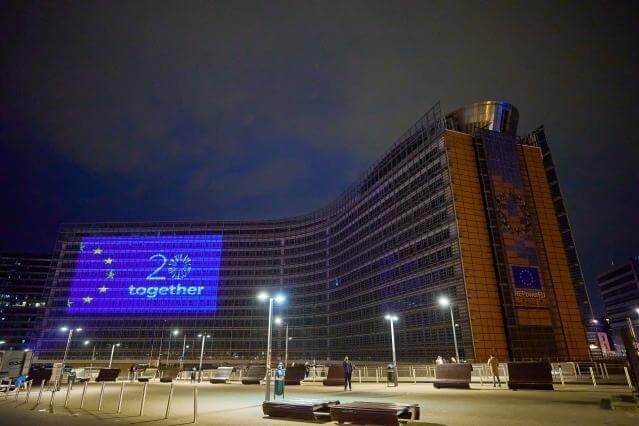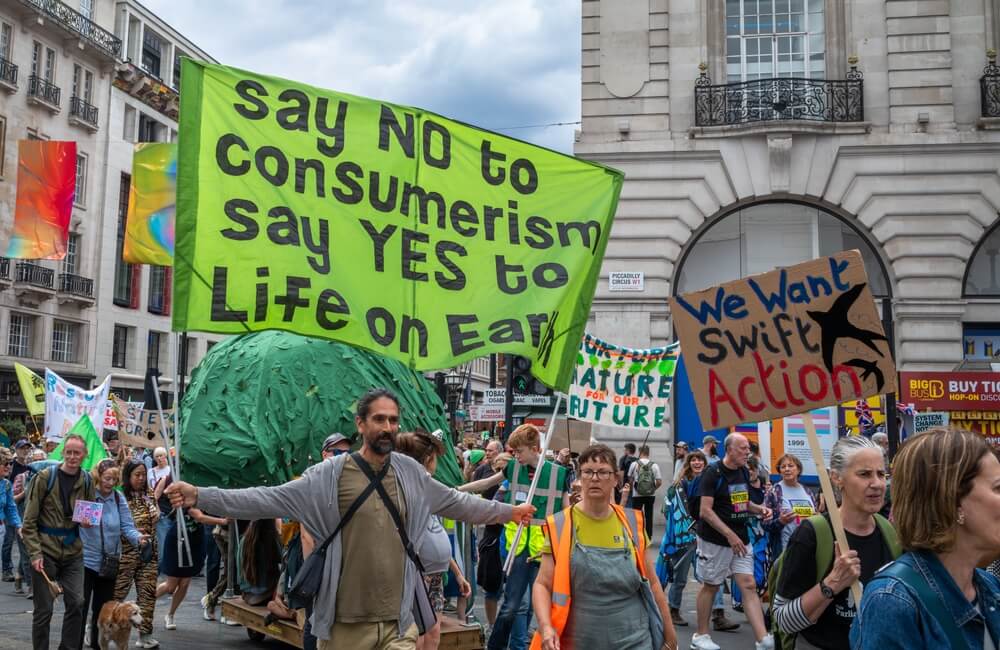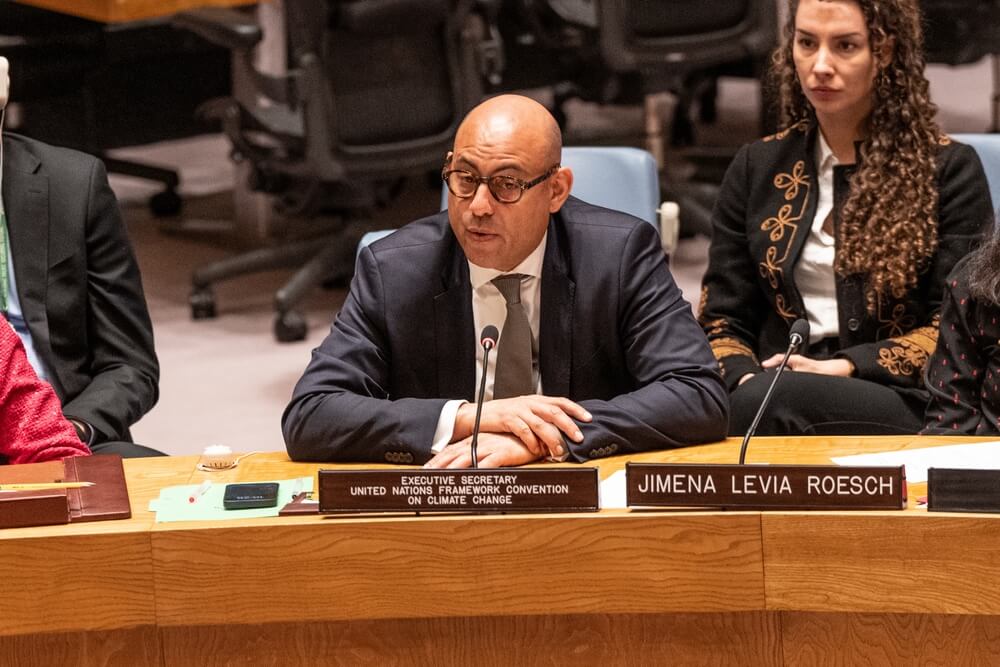The post-World War II recovery has been one of growth, with the human population growing, since 1950, at the rate of 1 billion every 10 to 15 years. But what does this imply for a sustainable future?
Climatic change, deforestation, rising sea temperatures and levels, as well as pollution (especially eWaste and plastics), are changing ecosystems, this leading to biodiversity loss. The magnitude of the problem is illustrated in the WWF’s Living Planet Report 2022.
This highlights that between 1970 and 2018 there has been ‘an average 69% decline in the relative abundance of monitored wildlife populations around the world’. Regionally, Latin America has experienced the biggest decline (94%). In early 2024, the UNEP-WCMC reported that 20% of migratory species are vulnerable to extinction, whilst around 44% are experiencing population decline.
The unrelenting human assault upon the planet’s biosphere is destroying the conditions of life for many different forms of life, including humans. This is against the backdrop of carbon dioxide levels that have grown by about 5.5 times the level of 1950. It had taken over 100 years to get to this 1950’s level. Is Planet Earth experiencing its 6th mass extinction?
My previous article ‘All is well. Planet Earth is Safe’, concluded that this 6th mass extinction is happening and that humanity will become extinct. Further, that Planet Earth will survive and biodiversity will be replenished.
However, is this the only outcome? Can humanity redeem itself?
Rising military tensions
The 1909 narrative ‘The Machine Stops' by E.M. Forster is about the human population living in cities buried deep underground that are regulated by ‘The Machine’ due to a perceived uninhabitable Earth’s surface that had been destroyed thousands of years previously.
Whatever the reason for the destruction of the Earth’s surface in this prophetic hundred year old narrative, it may well be that us humans, as we currently destroy the conditions for survival, become the victims of famine, war and pestilence as proposed in 1798 by Thomas Malthus. Is this fantasy?
The World Food Programme reveals the magnitude of a global food crisis with ‘As many as 309 million people are facing chronic hunger in 72 countries’, much of this driven by conflict. Indeed CrisisWatch reveals that there are over 70 conflicts globally.
Moreover, NATO’s recent Washington Summit Declaration reveals rising military tensions, with the Stockholm International Peace Research Institute reporting that military expenditure is increasing in all parts of the world. COVID-19 is a stark reminder of a global pandemic that killed 14.9 million people over the two years 2020 and 2021. However, it was not the first global pandemic, for, example Spanish Flu killed over 50 million world-wide during 1918-19.
Perhaps Malthus was right. Famine, war and pestilence will self-regulate humanity. Moreover, those that are left are dependent upon possibly currently unthought of technologies to survive in the Earth’s depleted biosphere, perhaps underground.
Alternatively, against the backdrop of a new ‘Cold War’ between East and West and, hopefully, hesitance for military engagement, there are three forces that collectively can diffuse and recover the situation.
Covid-19 revealed that global co-operation is possible as exemplified with the development of vaccines to combat this global pandemic
First, is the United Nations (UN), with its 193 member nation states and its mediating role to find solutions, in particular its role as steward for the 2030 Agenda for Sustainable Development and the associated Sustainable Development Goals (SDGs). Whatever its failings, there is no other international organisation which brings together all nation states, as well as has sustainable development as a priority.
Indeed, the UN Secretary-General, António Guterres, revealed the core feature for a sustainable future in his statement ‘In the end, it comes down to values…’, which, by characterisation, embraces the UN principles of peace, security, justice, respect, equal rights and self-determination.
This notion of values differentiates people into those that want to support a sustainable future and those whose decisions consciously seek to harm others as well as the environment they live in. Moreover Covid-19 revealed that global co-operation is possible as exemplified with the development of vaccines to combat this global pandemic.
This invokes the second force, which is the voice and actions of people, both individually and collectively, which is shaped by the values they embrace. Perhaps operative at the level of the nation state, the concept of the quadruple helix reveals four prominent stakeholders, this not only comprising the Government, but also Industry, Universities and Civil Society. Each comprise of people, each of whom will have some form of ‘values’.
Government is assumed to stand at the helm of any nation state and a democratically elected government ought to represent the voice and hence values of the people.
However, the 2024 Edelman Trust Barometer reveals that the competence and ethics of Governments tends to not be trusted, especially for wealthier Western Governments. Moreover, the recently released Sustainable Development Goals Report 2024 reveals that only 17% of the SDG targets are progressing as intended, with over a third stalled or regressing, exacerbated by a growing wealth gap between the world’s wealthiest economies (nation states) and developing economies who financially struggle to make progress with the SDGs.
 The competence and ethics of Governments tends to not be trusted, especially for wealthier Western Governments - European Commission
The competence and ethics of Governments tends to not be trusted, especially for wealthier Western Governments - European Commission
One challenge for Governments is how their commitment to sustainability is expressed in policies, legislation and initiatives and how this translates into local government services (e.g. recycling of household waste). This includes how support is given to struggling nation states. Indeed, has the time arrived when the main geopolitical debates should be about how to achieve the common good in the form of a sustainable future, rather than the geo-political pursuit of self-interest.
Moreover, whilst it might be assumed that the onus falls upon nation states and its political and financial institutions to address this gap, perhaps there is a significant role for Industry and specifically the corporate world.
The Forbes Global 2000 reveals companies with profits of the order of 10s of $billions with some over $100bn. The IMF reports the wealth of nation states by GDP, this revealing that there are many corporate businesses who are wealthier than many developing nation states and may have significant influence upon these nation states.
This raises the question of how the ‘value statements’ of these larger corporations translate into the ‘triple bottom line’ and put people and the planet before profit. The 2024 Edelman Trust Barometer discloses that there is a lack of trust in companies headquartered in global powers such as the US and China.
Is there a corporate form of colonialisation going on that exploits the resources of less wealthy nation states such as found in Africa? However, whilst the larger corporations have power and ‘responsibilities’, every business has its contribution to make towards a sustainable future.
It is hardly surprising that the message about sustainability has only relatively recently permeated the school system
Likewise, Universities, the bastions of new knowledge creation and education, have a role in their transfer of this knowledge capital to the world. Much of this knowledge, such as understanding the science of how the planet functions and how humanity engages with it, as well as technological innovations, is relevant to a sustainable future. However, we need to look at the role of the broader education system.
The shaping of a person’s values takes place at a young stage in their life, in a ‘learning ecosystem’ that includes both family and (pre-)school. Whilst the first UN conference about the environment was in 1972, the concept of sustainable development was first defined in the 1987 Brundtland Report.
It is hardly surprising that the message about sustainability has only relatively recently permeated the school system. As a consequence, GenZ (mid-1990s to early 2010s) and the more recent Gen Alpha are the most aware and perhaps activist about sustainability issues, exemplified by the activism of Greta Thunberg.
Greta Thunberg is a member of Civic Society which is us, the people, and we have a voice. We are over 8 billion in numbers. Our well-being together with the health of Planet Earth ought to be our priority. However, there are gross inequalities amongst us, as revealed in the World Inequality Report 2022. This reveals that the top 1% of the world’s population own 38% of the global wealth, while the bottom 50% captured only 2%.
Indeed, Forbes lists 2747 billionaires who, as individuals, are scattered globally. However, whilst some of this billionaire wealth, such as that of Bill & Melinda Gates, is redistributed though philanthropic activity, there are other members of Civic Society, such as Greta Thunberg, who have a passion about a particular injustice or harmful consequence and build up a momentum that can lead to the emergence of Non-Government Organisations (NGOs) active in pursuing a particular cause, as illustrated with the WWF (1961), Greenpeace (1971), Friends of the Earth (1971), Rainforest Alliance (1987), Earthworks (1988), Depave (2008), 350.org (2008), to name just a few.
 Growing awareness and understanding of the threats to Planet Earth, particularly amongst the emerging prominence of informed younger generations is leading to a change in consumerism
Growing awareness and understanding of the threats to Planet Earth, particularly amongst the emerging prominence of informed younger generations is leading to a change in consumerism
To add, growing awareness and understanding of the threats to Planet Earth, particularly amongst the emerging prominence of informed younger generations is leading to a change in consumerism, as revealed in a 2022 Credit Suisse Research Institute international survey of younger consumers.
Their increasing demand for more sustainable offerings (e.g. food, clothing, energy-saving technologies, travel) is bolstered by the requirement that the company (brand) has aligned values, though there is much scepticism to company claims.
This shift in consumer behaviour ought to be a driver to transform these companies to develop business practices that are visibly more sustainably accountable, with this cascading upstream into their supply chains to those supplying the raw materials.
Nevertheless, the lure of cheap unsustainable offerings can be expected to persist due to limited personal or household budgets. Intent is undermined by the practicalities of affordability, inviting Governments and Industry to address.
Irrespective, ultimately it is Civic Society and the voice of the people expressing the necessity of valuing and pursuing sustainability that is the real driver for lasting transformation.
Technology
The third force is technology, of which there are four forms. In addition to the familiar digital technologies, there are nano-, bio- and cogno-technologies. Moreover, and captured by such notions as #tech4all, #tech4good and #tech4nature, technology can be a force that transformatively amplifies efforts to improve habitat and wellbeing.
For example, the Rainforest Connection, in collaboration with Huawei, uses repurposed smartphones and AI to monitor spider monkeys and other species as well as to detect illegal logging and poaching thereby protecting rainforest habitats. Drones can deliver medical supplies in areas with poor infrastructure as illustrated by Zipline’s use of drones in Rwanda.
3D bioprinting could afford the potential to address critical public health challenges, for example, the replacement or repair of human organs and tissue
A recent report by the World Health Organization (WHO) suggests that 3D bioprinting could afford the potential to address critical public health challenges, for example, the replacement or repair of human organs and tissue. Likewise, UNCTAD reports on how technology can improve the provision of fresh water and sanitation. There are many technologies and many possibilities of application.
However, from a sustainability perspective, there are two aspects to any technology. First, is its application for social or environmental good. The other is the sustainability of its production, supply chain and end-of-life. Electric vehicles are an example of a so-called transformative technology, with the European Environment Agency (EEA) stating:
“Electric cars, vans, trucks and buses will play a key role in reducing some of the negative impacts of road transport on human health, the environment and climate”
However, the International Energy Agency (IEA) reveals that electric vehicle have a demand for minerals, most of which are not required for conventional combustion engine vehicles. These minerals include cobalt and lithium, which are both required for the battery. However, there are concerns about the human rights and environmental abuse in the sourcing of these minerals. For example, DR Congo accounts for 74% of global cobalt mine production, but at a cost that includes the forced evictions of communities.
Another consideration is whether renewable energy sources are used to charge these batteries. At the other end to the sourcing of raw materials and energy is maintenance, repair, refurbishment, repurposing and recycling as well as the regenerative processes that can be found in the natural world (e.g. biodegradation), all of which is captured in the Ellen MacArthur Foundation’s notion of the ‘circular economy’.
Wrap up
Humanity is in a mess. Indeed, Simon Stiel, Executive Secretary of UNFCCC, stated in April, 2024 that ‘Humanity has just 2 years ‘to save the world’. The future does appear gloomy and it might be too late to meet targets such as set with the UN 2030 Agenda. However, irrespective of the consequences of this failure (e.g. rising temperatures, biodiversity loss, clean water stress, food security, eWaste), there is longer-term hope. It’s all about values.
 Humanity has just 2 years to save the world - Simon Stiell
Humanity has just 2 years to save the world - Simon Stiell
As people, particularly the young, become better informed about what is happening to Planet Earth and their latent human values are awoken, the voice of the people will get louder, especially in less wealthier nation states. It’s all about values.
To add, existing ways of doing things that profit a minority to the detriment of the rest is not a viable model for the future of humanity and neither for Planet Earth. Andrew Carnegie’s ‘The Gospel of Wealth’ argued that it was unnecessary to accumulate so much wealth that is surplus to needs and, rather, that this surplus ought to be distributed for the benefit of all in the community. This argument is equally valid to not just individuals, but also to corporations and nations states. Wealth finances the resources needed to make a sustainable future possible. It’s all about values.
The future of humanity is everyone’s responsibility. We are the people. We have a voice. Governments, Businesses and the rest need to listen and act. It’s all about values.
There is no alternative.